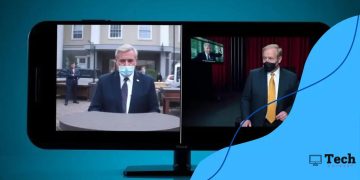Understanding fake news and how to spot it effectively

Understanding fake news and how to spot it involves critically analyzing sources, recognizing misleading headlines, and utilizing fact-checking resources to distinguish credible information from misinformation.
Understanding fake news and how to spot it is vital in today’s information-driven world. As misinformation spreads rapidly online, learning to discern truth from deception has never been more important. Ready to dive into this topic?
The rise of fake news in the digital age
In recent years, the rise of fake news has become a significant issue in our digital society. This phenomenon is mainly fueled by social media, where information spreads quickly and often without verification. Understanding how this happens can help individuals become more mindful consumers of information.
How Fake News Spreads
Fake news often spreads through various channels, especially on social media platforms. People share articles without checking the sources, leading to widespread misinformation. This process is accelerated by algorithms that promote sensational content over factual reporting, causing users to encounter misleading information repeatedly.
What Makes Fake News Attractive?
- Emotional Appeal: Fake news often triggers strong emotions.
- Confirmation Bias: Readers are more likely to share news that aligns with their beliefs.
- Clickbait Headlines: Intriguing titles encourage clicks without substantial content.
The attention-grabbing nature of fake news can lead to significant consequences. As more individuals engage with misleading information, it can shape public opinion and influence decisions. This situation highlights the need for critical thinking and fact-checking.
Additionally, misinformation can undermine trust in legitimate news sources. When audiences can’t distinguish between real and fake news, they may become skeptical of all media, which poses a danger to informed citizenship. Overcoming this challenge involves both consumer awareness and responsible media consumption practices.
The Role of Social Media
Platforms like Facebook and Twitter play a critical role in the dissemination of fake news. Their rapid sharing features allow users to spread information in seconds, often before verifying its accuracy. Addressing the challenge of fake news requires collaboration between tech companies and users.
In conclusion, comprehending the scope and impact of the rise of fake news is essential for everyone. By fostering media literacy and sharing credible information, we can combat the negative effects of misinformation in our society.
How to identify misleading headlines
Identifying misleading headlines is crucial for navigating today’s information landscape. Many articles use catchy or sensational titles to draw readers in, but these headlines do not always reflect the content accurately. Knowing how to spot these headlines can help you consume information more critically.
Common Signs of Misleading Headlines
Misleading headlines often exaggerate facts or use vague language to create intrigue without providing substance. When evaluating a headline, consider whether it seems too good to be true or if it plays on your emotions. Being aware of emotional triggers in headlines can help you take a step back before clicking.
Techniques to Evaluate Headlines
- Look for Specificity: Headlines that lack details may be misleading.
- Cross-Check Sources: Always verify the information with reputable sites.
- Avoid Clickbait: Headlines with a promise of shocking info often don’t deliver.
Another essential factor to consider is the context. Some headlines might be taken out of context, potentially misrepresenting the full story. Reading beyond the headline and checking the date of publication is important to understand the current relevance of the information.
Moreover, pay attention to the tone of the headline. Headlines that use strong emotional language can be a red flag. If a headline sparks anger or fear, it might be aimed at provoking a reaction rather than delivering factual information. By practicing critical reading habits, you can strengthen your ability to discern the real news from the noise online.
Fact-checking resources and tools

Fact-checking resources and tools are essential for anyone wanting to verify the accuracy of information before sharing it. In today’s world, misinformation can spread rapidly, making it crucial to equip yourself with reliable tools to assess what you read.
Online Fact-Checking Websites
Several websites are dedicated to fact-checking news articles and claims. These platforms provide thorough analyses of statements made by public figures and media outlets. Some esteemed fact-checking sites include:
- Snopes: Known for debunking urban legends and viral content.
- FactCheck.org: A project of the Annenberg Public Policy Center that focuses on checking claims made by politicians.
- PolitiFact: This site rates the truthfulness of political statements and promises.
Using these resources, individuals can easily find whether a claim has been fact-checked and the conclusions drawn from those investigations. This way, you gain a clearer understanding of what information is credible.
Browser Extensions
In addition to websites, there are also browser extensions available that can enhance your ability to fact-check. These tools can alert you to unreliable sources or provide immediate verification options. Some popular extensions include:
- NewsGuard: Provides ratings on news sites based on journalistic standards.
- Fake News Detector: A tool that helps identify potential misinformation.
Integrating these tools into your daily browsing habits empowers you to assess information critically while online.
Moreover, social media platforms themselves are beginning to implement fact-checking features. For example, Facebook has partnered with fact-checking organizations to review articles shared on its platform. These partnerships can help users better navigate shared content and determine its validity.
By familiarizing yourself with available fact-checking resources and tools, you can become a more informed consumer of news. Utilizing these tools will not only improve your knowledge but also encourage responsible sharing habits among your peers.
The impact of fake news on society
The impact of fake news on society has become a pressing concern in our digital age. This phenomenon not only shapes public opinion but also influences political and social dynamics. Understanding its effects is crucial for fostering a more informed population.
How Fake News Shapes Beliefs
Fake news can distort reality by presenting false information as truth. As people encounter misleading stories repeatedly, they may begin to accept these narratives as fact. This cognitive bias can reinforce preexisting beliefs and create division within communities.
Consequences for Democracy
In democratic societies, the spread of fake news poses a significant threat. It can undermine trust in legitimate reporting and lead to misinformation about political candidates and policies. When citizens are misled, they may make decisions based on inaccurate information, compromising the integrity of elections.
- Polarization: Fake news tends to foster extreme viewpoints, making compromise more difficult.
- Voter Manipulation: Misinformation can skew voter perceptions, impacting election outcomes.
- Loss of Trust: Increased circulation of fake news erodes public trust in the media.
Additionally, fake news can affect public health by spreading false information regarding medical advice or treatments. This issue was notably highlighted during the COVID-19 pandemic, where incorrect information about the virus led to dangerous behaviors and widespread confusion.
As society battles these challenges, combating fake news requires collective effort. Media literacy education plays a critical role in empowering individuals to discern fact from fiction. By understanding the tactics used in fake news, people can strengthen their critical thinking skills and minimize the likelihood of being misled.
Steps to promote media literacy
Promoting media literacy is essential in today’s information-rich environment. By enhancing media literacy skills, individuals become better equipped to navigate the complexities of the news landscape and identify misinformation. Here are some key steps to help foster media literacy.
1. Education and Awareness
Education plays a critical role in promoting media literacy. Schools, community centers, and organizations can offer workshops or classes that teach individuals how to evaluate sources critically. This education can include lessons on recognizing bias, understanding the difference between opinion and fact, and pinpointing credible sources.
2. Encourage Critical Thinking
Encouraging critical thinking helps individuals analyze information before accepting it as truth. When consuming news, ask questions like:
- Who created this content?
- What is the purpose of this message?
- What evidence supports the claims made?
This questioning approach creates a habit of scrutiny that helps in discerning the reliability of various news pieces.
3. Engage with Diverse Media
Interacting with a variety of media sources can enhance media literacy. This includes reading different newspapers, following diverse online platforms, and consuming content from various perspectives. When individuals expose themselves to multiple viewpoints, they become more adept at recognizing biases and understanding the larger narrative.
4. Support Fact-Checking Initiatives
Supporting and using fact-checking initiatives can also advance media literacy. Encouraging friends and family to verify information before sharing contributes to a culture of responsibility. Sharing reputable fact-checking websites can help others learn to spot misinformation effectively.
By implementing these steps, communities can work together to create a more informed public. The sustained effort in promoting media literacy will empower individuals, enabling them to counteract the influence of misleading information.
fake news and promoting media literacy are vital steps in today’s world. We must be proactive in distinguishing between credible information and misinformation. By utilizing fact-checking resources, learning to recognize misleading headlines, and engaging with diverse media, we can empower ourselves and others. Together, we can create a more informed society that values truth and clarity, fostering critical thinking in every interaction with media.
FAQ – Understanding Fake News and Media Literacy
What is fake news?
Fake news refers to false or misleading information presented as news, often to manipulate or misinform readers.
How can I identify misleading headlines?
Look for specificity in headlines and check if they trigger strong emotional responses. Assess if the content matches the headline.
What resources can help me verify information?
You can use fact-checking websites like Snopes, FactCheck.org, and PolitiFact to verify claims and news reports.
Why is media literacy important?
Media literacy is vital as it empowers individuals to discern credible information from misinformation, promoting informed decision-making.






